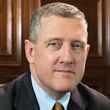President's Message: The Effectiveness of QE2
The federal funds rate has been close to zero since December 2008, when the Federal Open Market Committee (FOMC) voted to reduce the target to between 0 percent and 0.25 percent. With its policy rate near the zero bound, the FOMC turned to large-scale asset purchases (so-called quantitative easing) as economic conditions warranted further action. Quantitative easing was successful and showed that the Fed can conduct effective policy even with the fed funds rate near zero.
The FOMC's first quantitative easing program, which began in late 2008 and ended in the first quarter of 2010, consisted of purchases of agency debt, agency mortgage-backed securities and longer-term Treasury securities. The program is generally considered to have been successful in further easing monetary conditions. Throughout the spring of 2010, however, financial market stress in the U.S. increased again, mostly in response to an intensification of the European sovereign debt crisis.
During the summer of 2010, the pace of the U.S. economic recovery slowed. In addition, inflation and expected inflation were both quite low—some measures were as low as they had been in 50 years. Inflation, while still positive, had been trending downward (which is known as disinflation) throughout the first half of 2010. As the Japanese experience over the past 15 years has shown, having mild deflation (i.e., declining prices) along with a near-zero policy rate can lead to poor economic outcomes, and the situation is difficult to escape.[1], [2] Avoiding a similar experience in the U.S. was one of the primary motivations for a second round of quantitative easing.
Fed Chairman Ben Bernanke gave a speech in Jackson Hole, Wyo., on Aug. 27, 2010, in which he first indicated that a second asset-purchase program may be needed. At the Nov. 2-3 meeting, the FOMC made the decision to purchase Treasury securities at a pace of about $75 billion per month through the first half of 2011 for a total of $600 billion—the program commonly known as QE2.[3]
The policy change was largely priced into the markets ahead of the November FOMC meeting, as financial markets are forward-looking. The financial market effects of QE2 were entirely conventional. In particular, real interest rates declined, expected inflation increased, the dollar depreciated and equity prices rose. The purchases of longer-term Treasury securities essentially lowered the risk-free real interest rate, which then caused some investors to switch to riskier assets—most notably U.S. equity markets, but also emerging market equities and commodities as an investment class—in search of higher rates of return.
Following the November decision, many people expected the program to have no impact. Some even went so far as to say that purchasing $7 trillion in longer-term bonds was necessary. But based on the fairly substantial financial market impact of $600 billion in purchases, those views have been dispelled.
While the effects on financial markets occurred during the run-up to the November decision, effects on the real economy (e.g., consumption and employment) are expected to occur six to 18 months after the monetary policy action, as is the case with conventional monetary policy. Determining exactly which movements in real variables are due to monetary policy and which ones are due to other influences on the economy that occur in the meantime can be difficult. Disentangling these effects is a standard problem in monetary policy analysis. However, the real effects of the asset-purchase program will most likely be conventional, just as the financial market effects were.
As the experience with quantitative easing has shown, monetary policy can be effective even when nominal interest rates are at the zero bound. QE2 was successful as a classic easing of monetary policy in that the imprint on the financial markets looked just like a standard, aggressive monetary policy easing.[4] Furthermore, the disinflationary trend of 2010 has apparently been reversed, and the U.S. economy seems to have avoided the Japanese-style outcome. Although a rule-like approach would have been preferable from my point of view, rather than independent, isolated decisions with large amounts of purchases, the impact of quantitative easing on macroeconomic and financial conditions showed that the Fed has plenty of ammunition to carry out stabilization policy even when the policy rate cannot be lowered further.
Endnotes
- For more discussion, see Bullard, James. "Seven Faces of 'The Peril.' " Federal Reserve Bank of St. Louis Review, September/October 2010, Vol. 92, No. 5, pp. 339-52. [back to text]
- Also, see Hursey, Tim; and Wolman, Alexander L. "Monetary Policy and Global Equilibria in a Production Economy." Federal Reserve Bank of Richmond Economic Quarterly, Fourth Quarter 2010, Vol. 96, No. 4, pp. 317-37. [back to text]
- See Bullard, James. "QE2 in Five Easy Pieces." Speech at the High Profile Speaker Series, New York Society of Security Analysts, New York City, Nov. 8, 2010 [back to text].
- Research at the St. Louis Fed suggests that quantitative easing programs in the U.S. can have international effects (e.g., a reduction in long-term foreign bond yields), as well. See Neely, Christopher J. "The Large-Scale Asset Purchases Had Large International Effects." Federal Reserve Bank of St. Louis Working Paper 2010-018C, January 2011. [back to text]
Views expressed in Regional Economist are not necessarily those of the St. Louis Fed or Federal Reserve System.
For the latest insights from our economists and other St. Louis Fed experts, visit On the Economy and subscribe.
Email Us


